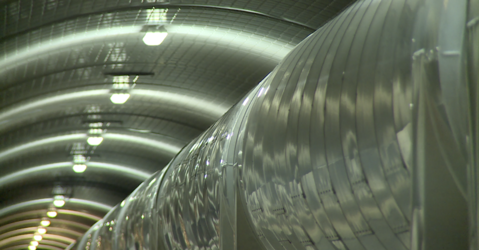You are here
Videos
Each year, some 40 billion tonnes of CO₂, one of the main greenhouse gases, are released into the atmosphere. A significant proportion of these is captured by the oceans, vegetation and the soil. The CNRS scientists are trying to better understand these natural carbon sinks, predict their evolution and also increase their storage capacity, or even envisage artificial sinks.
Recent Videos
In order to discover gravitational waves, detectors must be able to distinguish movements as small as one billionth the size of an atom. This major feat of sensitivity has been accomplished and...
Discovered in the 19th century when the city of Bordeaux's fortifications were dismantled, a collection of 400 architectural pieces that date back to the Roman empire have stumped researchers for...
Since 2004, the yellow-legged hornet—also known as Asian hornet—has been spreading throughout Europe at an alarming rate. How can we get rid of this invasive species without killing other insects...
By studying an aquatic flatworm (planarian), well known for its extraordinary regenerative abilities, researchers in Marseille identified a gene capable of destroying tuberculosis and ...
Microalgae can produce food, fuel and capture carbon dioxide in the process. These tiny organisms seem to meet many of humanity's development challenges. Yet scaling up the technology from a lab...
How can we fight the increasing levels of pollution plaguing our cities? A surprising solution could come from luminous textiles. Indeed, a group of researchers has just combined fiber optics with...








